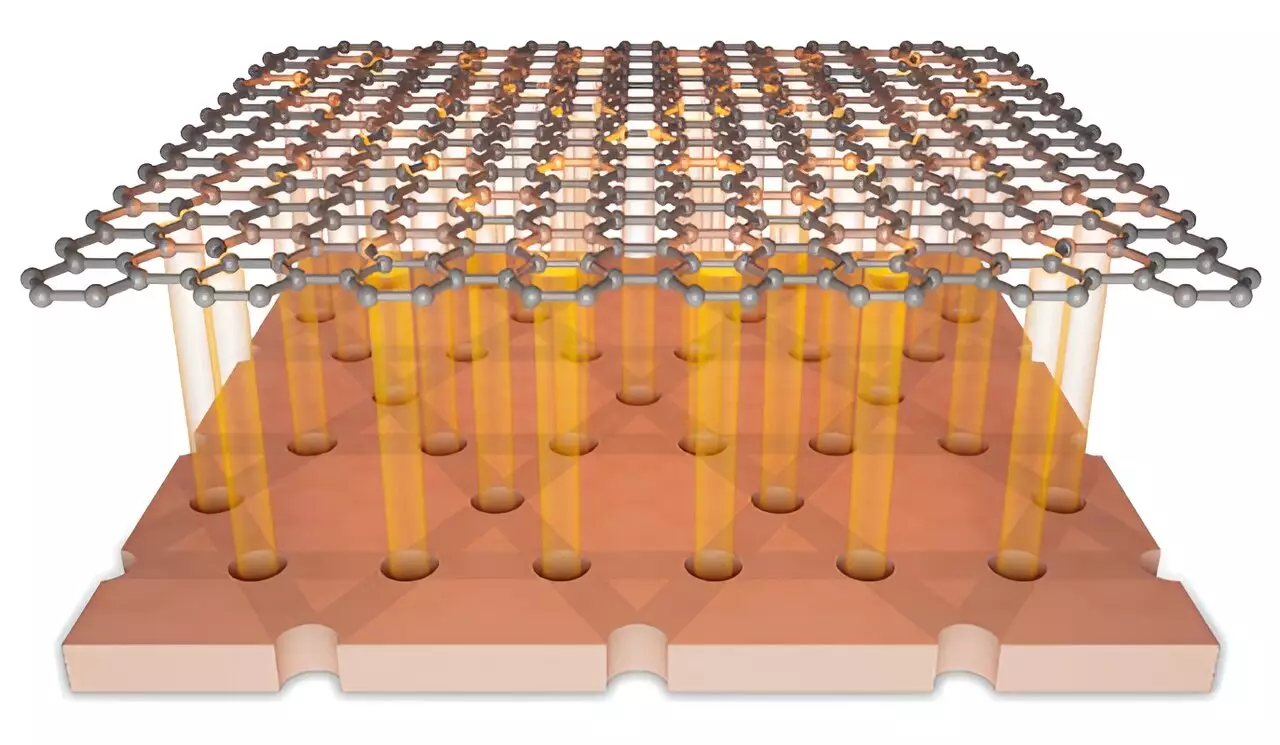In the pursuit of advanced materials with tailored electronic properties, scientists have continually explored innovative methods to manipulate the band structures of substances like graphene, a two-dimensional material lauded for its remarkable electrical, thermal, and mechanical capabilities. A recently published study in *Physical Review Letters* presents a groundbreaking technique that significantly enhances the ability to control electronic bands in graphene using an artificial kagome superlattice. This novel approach seeks to overcome the inherent limitations of traditional band engineering methods and heralds new possibilities in materials science and condensed matter physics.
The Current Landscape of Band Engineering
Traditional techniques for band engineering, such as employing heterostructures, applying interfacial strain, or alloying, have long been the mainstays in the modification of electronic properties. However, these methods exhibit constraints, particularly regarding the ability to achieve real-time and continuous adjustments in band structures. The emergence of van der Waals (vdW) materials has ushered in a transformative era for band structure modification, especially with graphene. Techniques such as gating and the formation of moiré heterostructures have provided alternative pathways to manipulate energy bands and invoke various emergent properties. Nonetheless, the critical challenge has remained: the precise control and selective manipulation of electronic bands to achieve desired characteristics.
The outlined research introduces a paradigm-shifting methodology, leveraging the formation of an artificial kagome superlattice to delicately influence the Dirac bands inherent in graphene. By fabricating a superlattice with a significant period of 80 nm, the team succeeded in folding and compressing higher energy bands into a lower-energy regime that can be readily studied and manipulated experimentally. This innovative kagome superlattice is pivotal as it allows for band modulation that was previously unachievable with existing techniques.
A critical aspect of this research is the incorporation of a high-order potential within the kagome structure, which enables sophisticated reconstruction of band structures through diverse contributions. This high-order potential stands as a cornerstone of the experiment, allowing researchers to selectively manipulate the dispersion characteristics of the bands, offering an unprecedented degree of tuning.
Technological Advancements and Methodology
Leveraging standard van der Waals assembly techniques and electron beam lithography, the research team meticulously fabricated the kagome-lattice pattern. This pattern functions as a local gate over the graphene sheet. The ability to adjust the voltage on both the kagome lattice and the underlying doped silicon substrate conferred remarkable control to the researchers. They could fine-tune the artificial potential’s strength and the carrier density within the graphene layer.
A seminal result of this tuning process is the observation and manipulation of the spectral weight redistribution among multiple Dirac peaks, thereby highlighting the kagome superlattice’s capability to influence electronic properties actively. Such advancements establish a framework wherein electronic characteristics can be tailored predictably and innovatively, paving the way for the next generation of graphene-based devices.
The study’s findings also reveal that when a magnetic field is applied, the kagome superlattice’s influence can be diminished, allowing the intrinsic Dirac band to regain prominence. This discovery introduces an additional layer of control over the electronic properties of graphene, illustrating the potential for multiple external parameters to modulate its band structure.
The revolutionary technique introduced by Prof. Zeng Changgan and his collaborators from USTC, Wuhan University, and IMDEA Nanociencia provides a compelling new avenue for band structure engineering. This work not only pushes the frontiers of material science but also opens doors for exploring novel physical phenomena and the design of materials with specific functionalities. As research in this area continues to evolve, we can expect to see transformative impacts across various technological domains, particularly in electronics and quantum materials. The kagome superlattice approach represents a significant stride towards realizing graphene’s full potential in advanced applications.


Leave a Reply